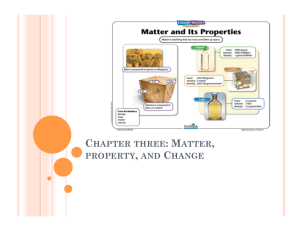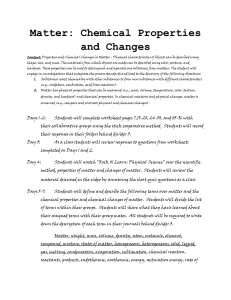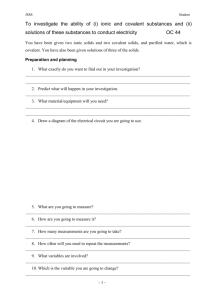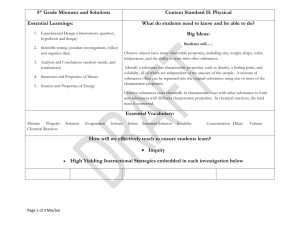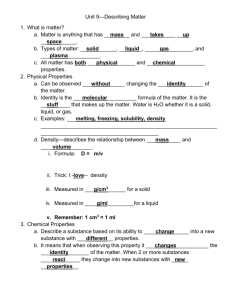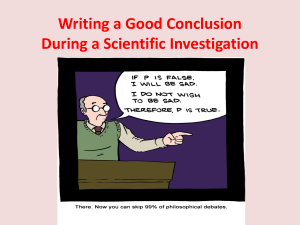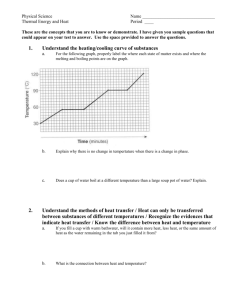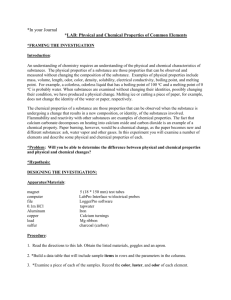Evaluating Evidence as an Individual Student Sheet
advertisement
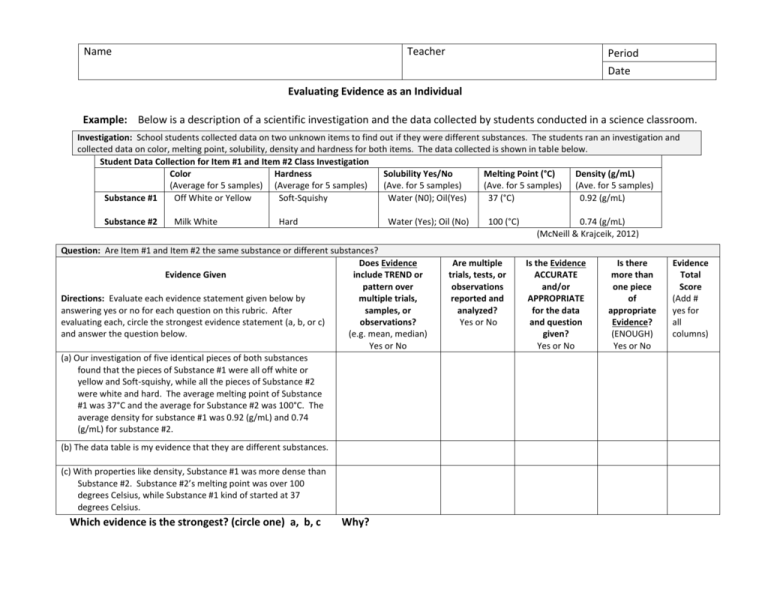
Name Teacher Period Date Evaluating Evidence as an Individual Example: Below is a description of a scientific investigation and the data collected by students conducted in a science classroom. Investigation: School students collected data on two unknown items to find out if they were different substances. The students ran an investigation and collected data on color, melting point, solubility, density and hardness for both items. The data collected is shown in table below. Student Data Collection for Item #1 and Item #2 Class Investigation Color Hardness Solubility Yes/No Melting Point (°C) Density (g/mL) (Average for 5 samples) (Average for 5 samples) (Ave. for 5 samples) (Ave. for 5 samples) (Ave. for 5 samples) Substance #1 Off White or Yellow Soft-Squishy Water (N0); Oil(Yes) 37 (°C) 0.92 (g/mL) Substance #2 Milk White Hard Water (Yes); Oil (No) Question: Are Item #1 and Item #2 the same substance or different substances? Does Evidence Evidence Given include TREND or pattern over Directions: Evaluate each evidence statement given below by multiple trials, answering yes or no for each question on this rubric. After samples, or evaluating each, circle the strongest evidence statement (a, b, or c) observations? and answer the question below. (e.g. mean, median) Yes or No (a) Our investigation of five identical pieces of both substances found that the pieces of Substance #1 were all off white or yellow and Soft-squishy, while all the pieces of Substance #2 were white and hard. The average melting point of Substance #1 was 37°C and the average for Substance #2 was 100°C. The average density for substance #1 was 0.92 (g/mL) and 0.74 (g/mL) for substance #2. (b) The data table is my evidence that they are different substances. (c) With properties like density, Substance #1 was more dense than Substance #2. Substance #2’s melting point was over 100 degrees Celsius, while Substance #1 kind of started at 37 degrees Celsius. Which evidence is the strongest? (circle one) a, b, c Why? 100 (°C) Are multiple trials, tests, or observations reported and analyzed? Yes or No 0.74 (g/mL) (McNeill & Krajceik, 2012) Is the Evidence ACCURATE and/or APPROPRIATE for the data and question given? Yes or No Is there more than one piece of appropriate Evidence? (ENOUGH) Yes or No Evidence Total Score (Add # yes for all columns)
